Mevlana Gemici
Primal-Dual Wasserstein GAN
May 24, 2018



Abstract:We introduce Primal-Dual Wasserstein GAN, a new learning algorithm for building latent variable models of the data distribution based on the primal and the dual formulations of the optimal transport (OT) problem. We utilize the primal formulation to learn a flexible inference mechanism and to create an optimal approximate coupling between the data distribution and the generative model. In order to learn the generative model, we use the dual formulation and train the decoder adversarially through a critic network that is regularized by the approximate coupling obtained from the primal. Unlike previous methods that violate various properties of the optimal critic, we regularize the norm and the direction of the gradients of the critic function. Our model shares many of the desirable properties of auto-encoding models in terms of mode coverage and latent structure, while avoiding their undesirable averaging properties, e.g. their inability to capture sharp visual features when modeling real images. We compare our algorithm with several other generative modeling techniques that utilize Wasserstein distances on Frechet Inception Distance (FID) and Inception Scores (IS).
Unsupervised Predictive Memory in a Goal-Directed Agent
Mar 28, 2018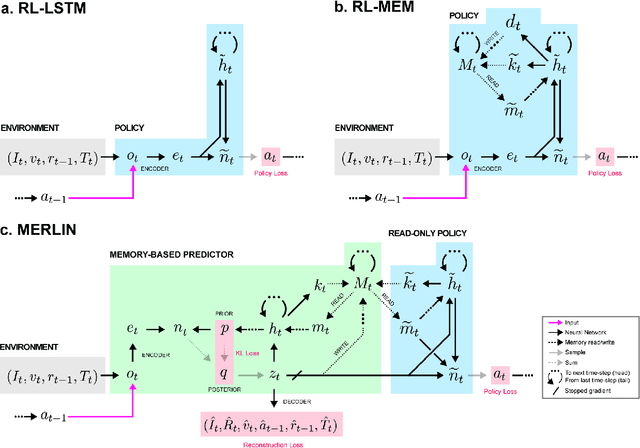
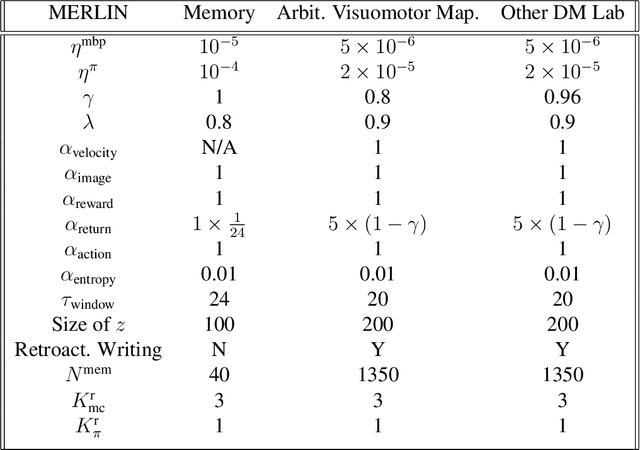
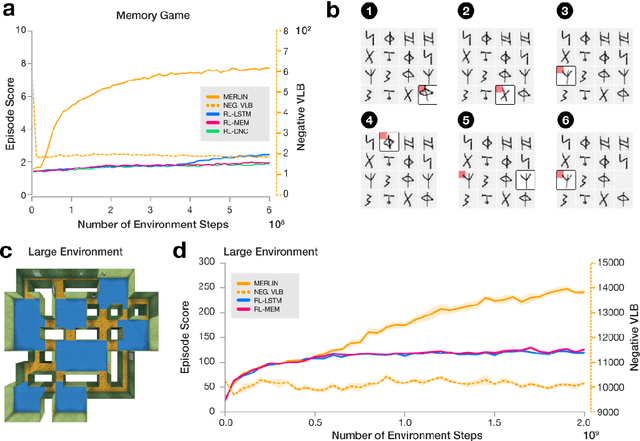
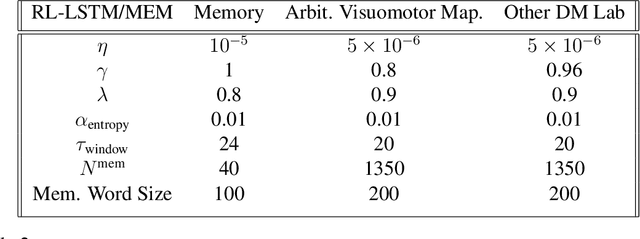
Abstract:Animals execute goal-directed behaviours despite the limited range and scope of their sensors. To cope, they explore environments and store memories maintaining estimates of important information that is not presently available. Recently, progress has been made with artificial intelligence (AI) agents that learn to perform tasks from sensory input, even at a human level, by merging reinforcement learning (RL) algorithms with deep neural networks, and the excitement surrounding these results has led to the pursuit of related ideas as explanations of non-human animal learning. However, we demonstrate that contemporary RL algorithms struggle to solve simple tasks when enough information is concealed from the sensors of the agent, a property called "partial observability". An obvious requirement for handling partially observed tasks is access to extensive memory, but we show memory is not enough; it is critical that the right information be stored in the right format. We develop a model, the Memory, RL, and Inference Network (MERLIN), in which memory formation is guided by a process of predictive modeling. MERLIN facilitates the solution of tasks in 3D virtual reality environments for which partial observability is severe and memories must be maintained over long durations. Our model demonstrates a single learning agent architecture that can solve canonical behavioural tasks in psychology and neurobiology without strong simplifying assumptions about the dimensionality of sensory input or the duration of experiences.
Generative Temporal Models with Memory
Feb 21, 2017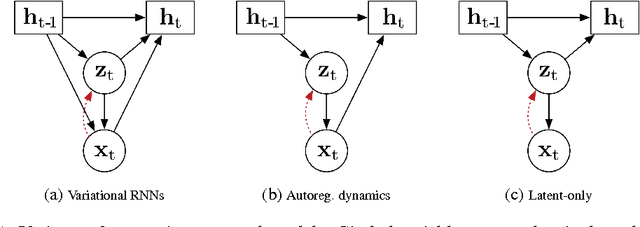



Abstract:We consider the general problem of modeling temporal data with long-range dependencies, wherein new observations are fully or partially predictable based on temporally-distant, past observations. A sufficiently powerful temporal model should separate predictable elements of the sequence from unpredictable elements, express uncertainty about those unpredictable elements, and rapidly identify novel elements that may help to predict the future. To create such models, we introduce Generative Temporal Models augmented with external memory systems. They are developed within the variational inference framework, which provides both a practical training methodology and methods to gain insight into the models' operation. We show, on a range of problems with sparse, long-term temporal dependencies, that these models store information from early in a sequence, and reuse this stored information efficiently. This allows them to perform substantially better than existing models based on well-known recurrent neural networks, like LSTMs.
 Add to Chrome
Add to Chrome Add to Firefox
Add to Firefox Add to Edge
Add to Edge